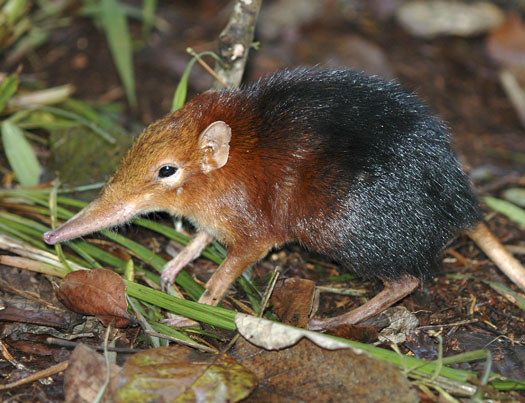- Home
- Introduction
Introduction
Tanzania is famous for its large mammals in a wide variety of habitats. While animals such as the elephant and lion capture the attention of most people, there are myriad species of smaller mammal, some found only in Tanzania that are unique and, in many cases, severely threatened.,This site is designed to both introduce the interested novice to the mammals of Tanzania, and serve as an aid to biologists focused on the study and conservation of these special mammals.,While the ultimate aim of this site is to cover all mammals of Tanzania, the initial emphasis is on those species associated with the mountains of this eastern African country. These mountains can be categorized in four major groups: the northern highlands (including Kilimanjaro and Ngorongoro), the Eastern Arc (including the Usambara and Udzungwa Mountains), the southern Highlands (including Rungwe and Kitulo) and the Albertine Rift (including Mahale). Each of these groups has different geologic origins, and climatic regimes. There are mammalian faunas that are, in some cases, shared among these montane groups, and in other cases unique to each.,In this site, you will find tools to aid in the identification of Tanzanian mammals, descriptions of each of the species (currently only those associated with montane settings or a select set of others), overviews of the various mountains of Tanzania, and related data sets and outreach products for use in educational programs focused on Tanzanian mammalogy.,We very much look forward to hearing from those that have used this site and have suggestions for how it can be improved. Please contact us at MammalsofTanzania@fieldmuseum.org if you have comments.
A Black-and-rufous Sengi (Rhynchocyon petersi)
 Black-and-rufous Sengi
Black-and-rufous SengiCourtesy of: W. T. Stanley. (c) Field Museum of Natural History. https://mm.fieldmuseum.org/3b8c17f8-7e6a-4c09-9675-eec4b02a6a21 (accessed on 21 Jan 2024)
Musk Shrew (Crocidura sp.)
 Musk Shrew
Musk ShrewCourtesy of: W. T. Stanley. (c) Field Museum of Natural History. https://mm.fieldmuseum.org/da923a54-0306-44cd-ba13-75a52a61e019 (accessed on 21 Jan 2024)
Acknowledgements
This site was made possible with support from the MacArthur Foundation and the Critical Ecosystem Partnership Fund. The Critical Ecosystem Partnership Fund is a joint initiative of Conservation International, the Global Environment Facility, the Government of Japan, the MacArthur Foundation and the,World Bank. A fundamental goal is to ensure civil society is engaged in biodiversity conservation.,Additional help and support came from John Bates, Mike Carleton, Cherry Hill Farm, Chicago Zoological Society, Peter Crane, Trish DeCoster, Alison Ebert, Joe Foss, Bill Gibson and his family, Linda Gordon, Shannon Hackett, Mary Hennon, Mary Ellen Holden, Rainer Hutterer, Sharon Jansa, Helen KafkaMark Kamhout, Ryan Killackey, Dieter Kock, Peter Lang, Jeremy Langdon and his family, Sarah Lansing, Richard Leakey, Tim Littig, Jim Mead, Greg Mercer, Abdoulaye Ndiaye, Debby Moskovits, David Moyer, Charles Msuya, Phil Myers, Charlie Potter, Rebecca Reeves, Teresa Rodriguez, Alan Rogers, Jim,Schulz, Jodi Sedlock, R. Senzota, Jo Stanley, Janice Taylor, United States National Museum, Bob Weir and colleagues, Dave Willard and Don Wilson.,Paintings: Rebecca Banasiak, Palden Hamilton, Josh Howland, Peggy McNamara, Ben Mehl, Marshall Svendsen,Translation: Imani Swilla